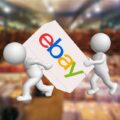e-Commerce marketing
Ecommerce marketing involves utilizing promotional strategies to attract visitors to your online store, converting those visitors into customers who make purchases, and then nurturing and keeping those customers after their initial transaction.
A comprehensive ecommerce marketing strategy includes both on and off-site marketing tactics. An effective marketing strategy can enhance brand recognition, foster customer loyalty, and ultimately boost online sales.
Below are a few practical ideas to try in order to promote your online store using ecommerce marketing tools. These ideas can be implemented for the purpose of enhancing business as a whole or to generate more sales for specific products.
Ecommerce marketing strategies
1. Invest in SEO
Ecommerce SEO is the process of optimizing an online store in order to have its product pages rank among the top 10 results on search engines such as Google, Yahoo, and Bing. This results in an increase in organic (non-paid and free) traffic to the website. According to Backlinko, the #1 organic result has a tenfold higher probability of receiving a click compared to a page in the tenth position.
Investing in SEO can be done through various methods.
- Performing keyword research and including keywords in your page URLs, product descriptions, and blog posts
- Optimizing your website structure and creating a good user experience
- Building backlinks from other reputable websites
If done successfully, you have the possibility to appear in top search results for commonly searched terms related to your products. The image provided displays Shopify merchant Everyday Yoga’s position on the first page of Google search results for the phrase “women’s yoga pants,” which is searched for over 49,500 times monthly.
2. Run an influencer marketing campaign
Utilizing influencer marketing is a clever strategy to expedite the growth of your online ecommerce business. This approach enables you to expand your target audience, establish brand recognition, and collaborate with content creators who drive sales on your behalf. Influencers function as internet personalities who serve as advocates for your brand, for which you compensate them by offering complimentary items, monetary compensation, or reduced prices as they promote your products.
According to a recent study conducted by Mediakix, influencer marketing is considered effective by 80% of marketers. Amongst the various marketing channels, Instagram is the preferred platform for 67% of brands, with others also being utilized.
- YouTube
- TikTok
- Snapchat
- Twitch
In terms of finding relevant customers, influencer marketing is excellent. Have you ever come across a post on Instagram by an influencer, appreciated their outfit, and desired to purchase it? The promotion of products via influencers makes the sales cycle shorter. With the increasing number of social commerce capabilities on Instagram and TikTok, shoppers have the opportunity to directly make purchases on the platform.
3. Sell on marketplaces
Marketplaces being the place where people shop online is widely known. The total value of goods sold on the leading online marketplaces in 2021 was $3.32 trillion, which made up two-thirds of global ecommerce sales.
Marketplaces such as Amazon and eBay offer the advantage of increasing brand visibility, enabling access to a large global audience. A portion of customers are enthusiastic marketplace shoppers, making it more likely that they will make a purchase through a familiar channel. Nonetheless, it is important to take into account the significant selling fees and other considerations associated with these marketplaces.
For ecommerce brands, it is advisable to utilize marketplaces in addition to your own branded store. It is not necessary to list all your products, only select the most popular ones. Generate attractive listings that showcase your brand and include branded packaging inserts with orders from marketplaces to promote direct shopping on your website.
4. Upsell your products
Many of us are familiar with the popular phrase, “Would you like to super size your order?” This phrase exemplifies upselling, the tactic of offering a slightly higher quality product compared to the one initially contemplated by the customer.
Upselling and cross-selling can often be more advantageous for ecommerce businesses as compared to acquiring new customers. In certain scenarios, customers may be unaware of the presence of a superior product, or they might require additional proof to comprehend how an upgrade or package aligns better with their requirements.
Are any of your product models crafted with higher-quality leather? Or do any of them feature a unique component that is handmade? Feel free to highlight the distinctions and inquire, at appropriate moments, if the customer would be interested in upgrading.
When utilizing upselling to boost sales, there are two primary factors to take into account:
- Make sure your upsells are related to the original product
- Be sensitive to the anticipated price range of your customers
For your product to be worth the extra cost, it must be noticeably better suited to meet the customer’s initial needs. Customers may not be excited about a higher price after they have a specific price in mind, which is known as an anchor price. This anchor price is typically the first number that customers see and use as a comparison against other price points.
When you have bought a computer before, you would know the screen that is shown below. After you have chosen a specific model, companies often emphasize upgrades to enhance performance (upselling) or suggest additional accessories (cross-selling) for you to think about.
5. Implement google shopping ads
A commonly used strategy involves the utilization of Google Shopping, an ad platform that displays products relevant to users’ Google searches. Once a user clicks on a particular item, they are immediately redirected to the seller’s website.
Per Gil Gildner, co-founder of Discosloth, a search marketing company, specifically focused Shopping ads are an extremely easy and cost-efficient method for an ecommerce company to boost product sales. This is because these ads efficiently assess potential customers by displaying the product image and price, ensuring that advertisers receive only highly targeted clicks.
He added that platforms like Shopify or WooCommerce make implementing this extremely easy.
According to Nikki Bisel, the founder of digital marketing consultancy and agency Seafoam Media, Google Shopping campaigns have effectively increased conversion rate and click-through rate (CTR) by up to 200%. This success is attributed to targeting consumers who have previously engaged with a specific brand, either by adding products to their carts or exploring product categories.
She stated that by narrowing our audience, there is a decrease in total clicks, but a significant increase in CTR and conversions, which is a advantageous outcome in terms of budget and ROI.
Specifically, try out Google showcase shopping ads
Ruba Aramouny, the owner and strategic director of Solid Marketing, recommended utilizing Google’s showcase shopping ads as a cost-effective method to attract traffic at the top-of-funnel stage. These ads enable advertisers to group similar products, thereby introducing their brand to users who search using general product terms.
She explained that Showcase ads have the unique quality of allowing you to bid at a lower rate than you would on a traditional Shopping ad, all the while presenting potential customers with a diverse range of products and images. Furthermore, even if a potential customer does not immediately purchase anything from your store, they become acquainted with your brand, enabling you to establish a receptive audience for remarketing purposes at a reduced expense.
6. Focus on site speed
According to Kearsley, ecommerce brands should ensure that their websites are “bang on” in terms of factors like site speed, header tags, and interactive media. She stated that if these aspects are optimized, it will significantly enhance the visibility and click-through rates of the site.
Clark Covington, the marketing manager at Jelly Bean Rubber Mulch, concurred that positive outcomes occur when there is an increase in the load speed of a website, which encompasses betterment in the functionality of the brand’s online ecommerce page.
He stated that when the speed at which a website loads increases, Google will prioritize pages more in search results for related keywords by improving the page speed score in our paid Google Ads account. Particularly noteworthy is the discovery of a Google study which revealed a significant 90% surge in bounce rate when the load speed increases from 1 to 5 seconds.
Lewis suggests that it is important to optimize images for commerce, as Google Images is the second most popular search engine.
“It is crucial to optimize your product images with alt text in order to guarantee their visibility in searches for product-related images,” he expressed. “These images are directly linked to the product pages, facilitating convenient purchases for interested individuals.”
7. Send personalized emails
Email marketing is an old method but still effective, particularly when personalized, to ensure customer retention.
When considering ways to encourage signups, brands should think about using incentives such as coupons and free trials.
According to Bernard Wong, a digital marketer at Vape Club, this approach has enabled the e-liquid online store to gather a collection of more than 45,000 email addresses in the United Kingdom. Wong also mentioned that individuals who utilize the ecommerce platform Shopify can effortlessly apply this method by installing apps such as Woohoo from the Shopify App Store.
Tom Buchok, the founder of the email monitoring firm Mailcharts, advised brands to be mindful of their emails’ tone, subject line, and the use of clickbait-y words that could potentially activate spam filters for both customers and leads.
Another important email strategy for ecommerce brands, according to Tanya Yablonskaya, an ecommerce industry analyst at ScienceSoft, is personalization. This involves conducting research on a customer’s buying habits and tailoring their interaction accordingly.
There are two methods to achieve this: through suggested products and specific promotions throughout a customer’s online experience, as well as through personalized follow-up emails.
She said that achieving excellence in the art of personalization requires practice. The more you experiment and measure the success of your attempts, the better understanding you gain about your customers and can communicate with them more effectively in the future.
Brophy recommended employing personalization in emails as a strategy to reconnect with customers who left their shopping carts unattended.
She said that sending emails to remind shoppers about items they left behind can significantly impact sales. However, emails are most effective when they are personalized, including the shopper’s name and a special offer or reference to a previous purchase or browsing history.
8. Issue coupons
Sara McQueen, a digital PR executive at Fractl, a content marketing agency, expressed the unsurprising fact that Shopper.com, their client, has discovered that using coupons is the preferred method. This is largely due to the fact that almost one-third of shoppers consistently search for discount codes whenever they shop online, and this trend is predicted to increase in the future.
According to McQueen, Shopper.com conducted interviews with 1000 customers in the U.S. and U.K. and discovered that consumers feel three times more knowledgeable when they discover coupons through online searches rather than receiving them directly.
McQueen also mentioned that if a retailer fails to inform them about potential savings, one in three consumers would feel irritated, and three in five would request a refund upon discovering they missed out on a discount post-purchase.





